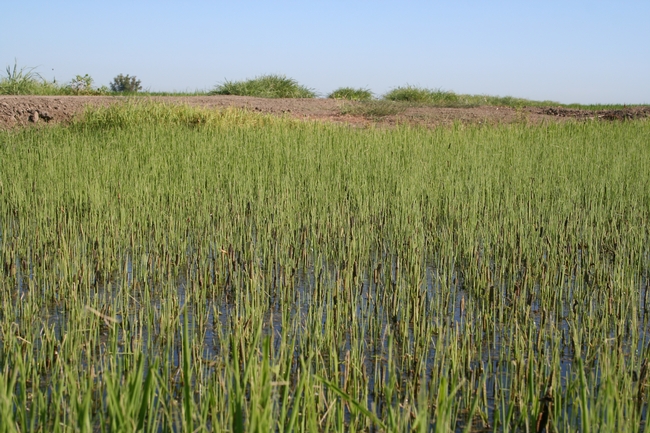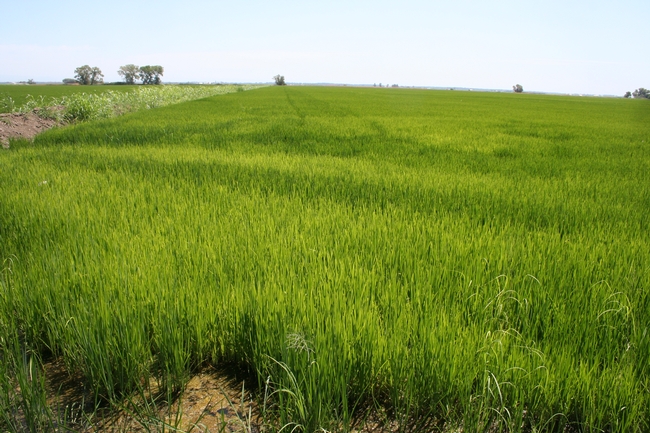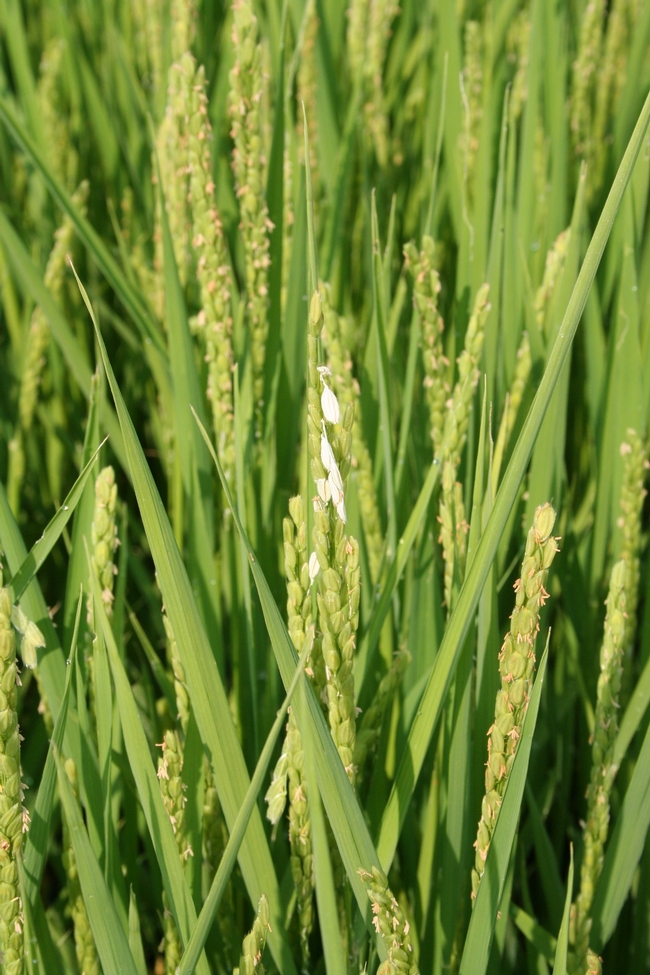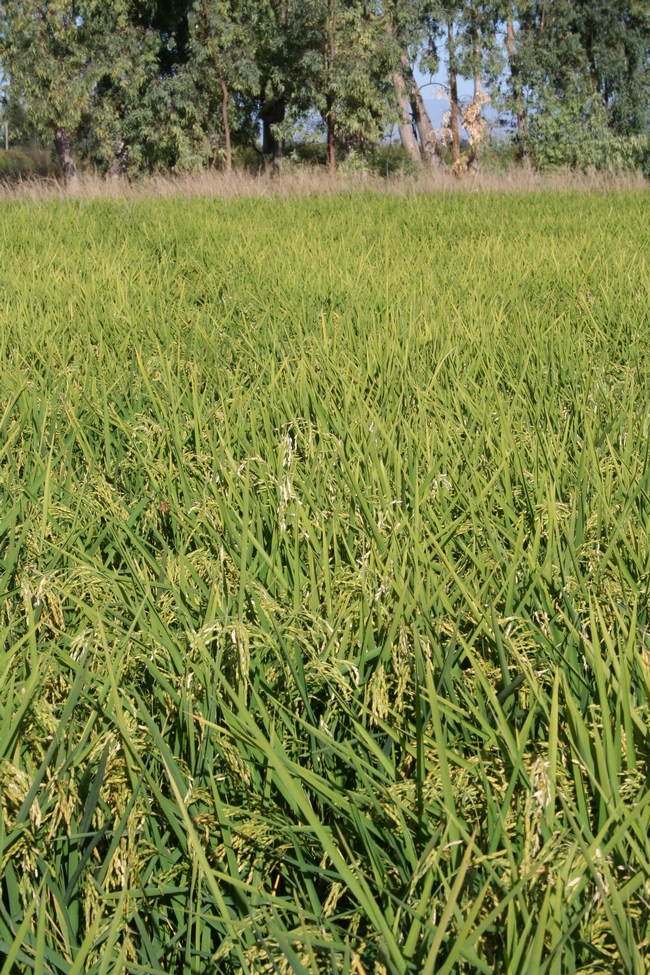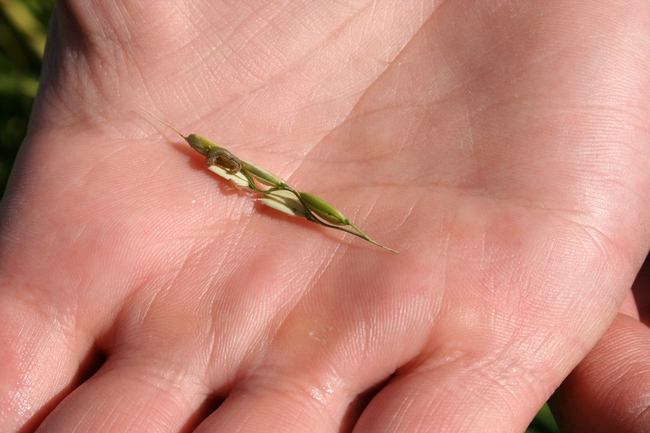The armyworm outbreak we experienced a few weeks ago seems to be over. Several fields in Glenn and Butte counties had very high populations and experienced severe defoliation. In some cases, the affected areas have recovered (see pictures below). However, there are reports that a few fields were defoliated to the water line. As we approach PI and topdressing, it is worth thinking about the likely consequences of the outbreak.
Above, severe armyworm defoliation. Below, same area, 20 days later
Rice has the capacity to recover from defoliation by producing new leaves and tillers. When the main tillers are affected, the plant will try to compensate for the loss in foliar area by producing additional lateral tillers. These tillers will mature later and will delay the maturity of affected areas of the field respect to less affected areas. In these fields, expect uneven grain maturity during harvest.
Nitrogen may help in the recovery of defoliated plants. In some cases, growers have applied nitrogen to the affected areas in an attempt to promote rapid regrowth. However, excess nitrogen can have several undesirable consequences. Excess nitrogen promotes stem rot and blast, diseases that can affect plants all the way until panicle maturity. Also, too much nitrogen can extend the plant's vegetative growth period, resulting in delayed development and uneven grain ripening. When topdressing in the next few weeks, avoid over-fertilizing armyworm affected areas.
In fields that have been severely affected, water management may also be complicated. Flooding periods may have to be extended, and with current water conditions, this will put extra demands on an already stressed water system. If possible, plan on turning off the irrigation and allowing the water to subside instead of draining the field. In fields with heavy clay soils, it is safe to not have standing water (soil still saturated) 24 days after 50% heading (when one-half of the panicles in a field have emerged) without risking yield loss and grain quality.
Be on the lookout for another armyworm infestation by early August. Most years, there is a second population peak during heading. Typical panicle injury consists of blank panicle branches, although sometimes the whole panicle can be blank. What happens is that the armyworm bites the rachis of the branch and the grains in that branch don't fill. Sometimes, armyworm injury can be confused with other causes, such as cold temperature blanking. However, if you look closely at the blanked panicle or branches, you will see a chewing mark where the blanked area begins.
Armyworm panicle injury during heading
Armyworm panicle injury later as seen during grain maturity
Inspect your fields as the panicles come out of the boot – I believe this is when most of the armyworm damage occurs. If after inspecting your field you find that 10% or more panicles are affected, and you can still find armyworms, a treatment might be needed. Monitor your fields constantly to catch those infestations as early as possible.
Small armyworm feeding on rice panicle
